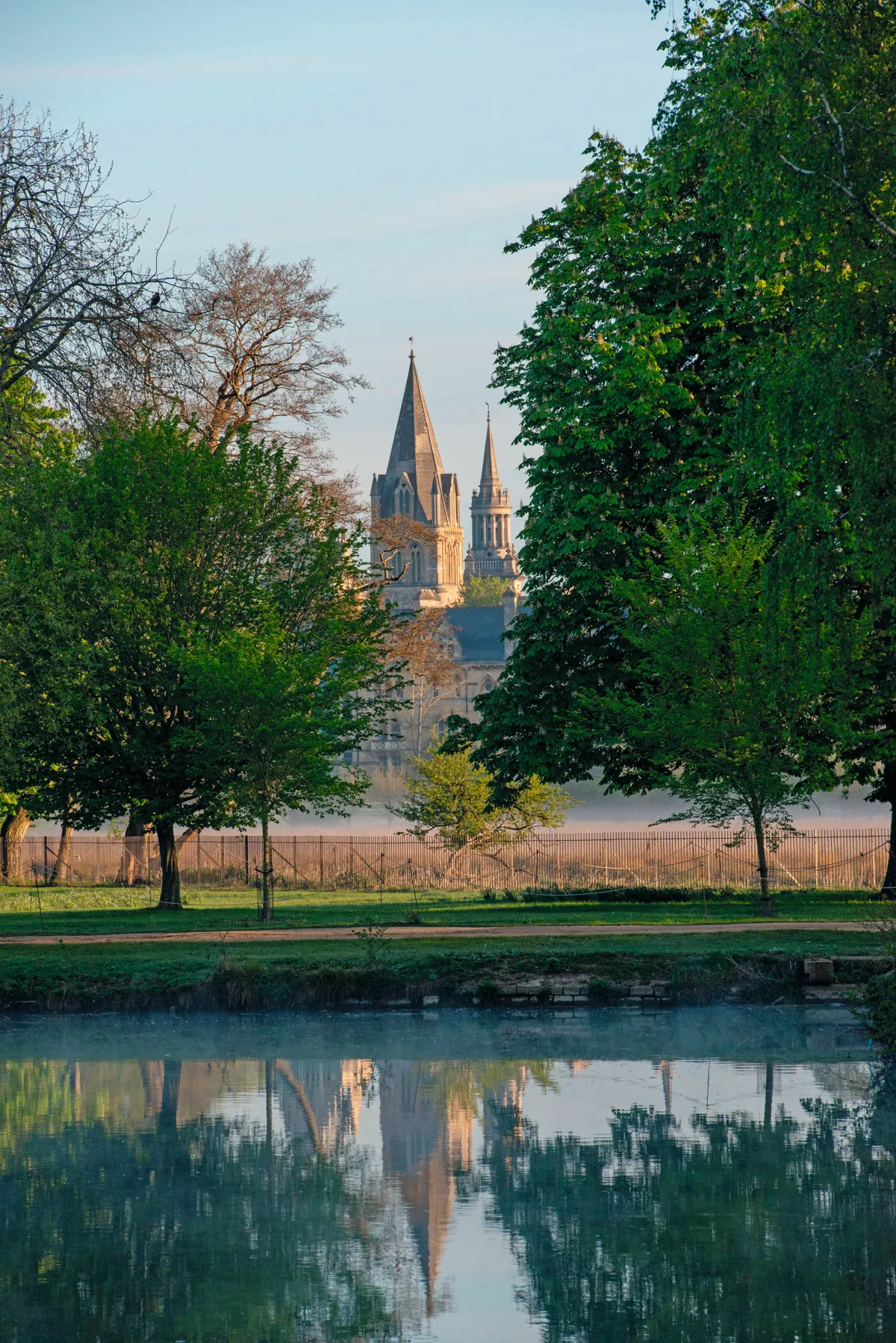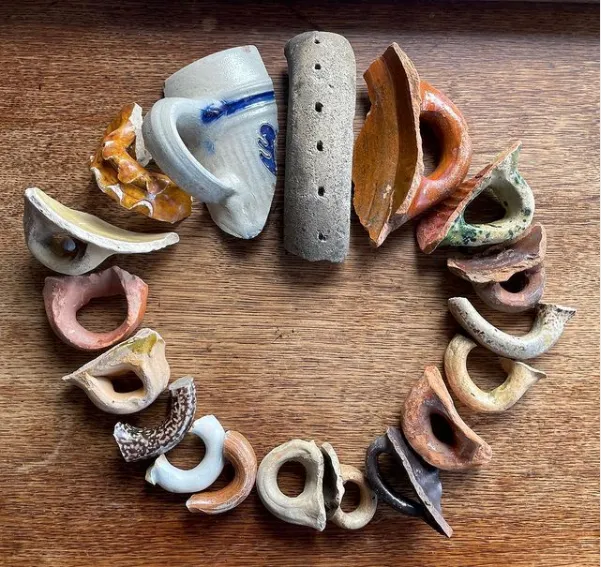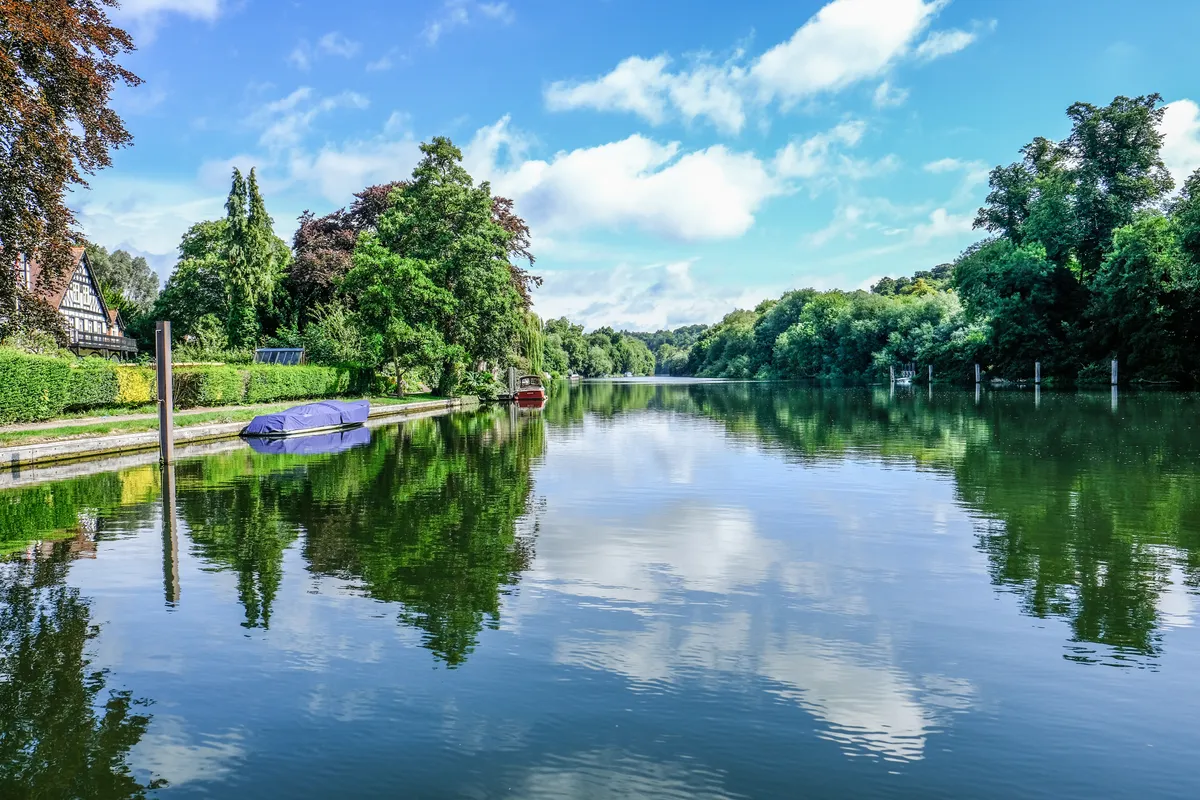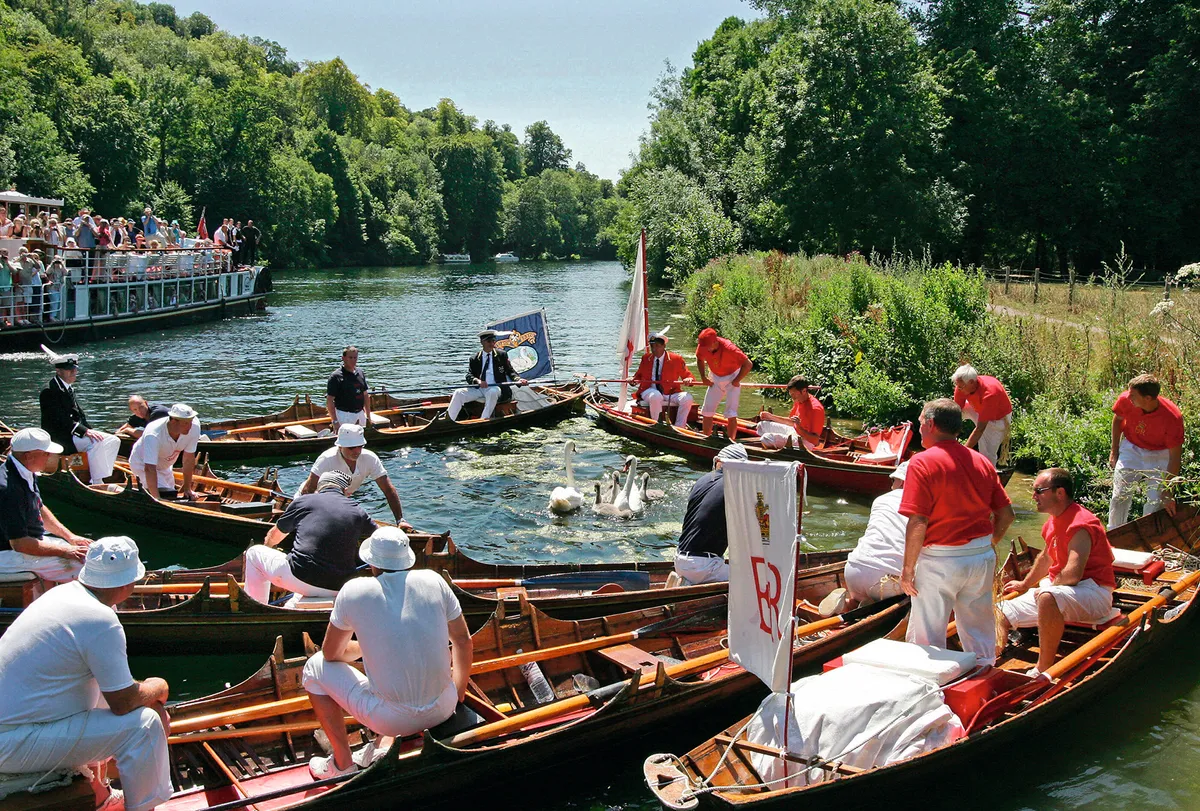Rising in a puddly field in the Cotswolds, the Thames flows for 215 miles to reach the coast, passing palaces, castles and cathedrals on its way. One of our four royal rivers, the Thames runs through nine counties, drifts under 134 bridges and carves a scenic, serpentine course through the countryside. From the upstream reeds to the clatter of central London, the river’s links with the monarchy have long been prominent.
To mark the Queen’s Platinum Jubilee, why not tour the Thames and admire the many regal sites that lie along its length?
You can walk the wonderful Thames Path National Trail, a 184-mile walk that traces the river from source to sea, sticking close to the banks for the vast majority of the route. Being largely flat, and offering plenty in the way of wildlife, refreshments and accommodation, it’s a superb walk. Or you could cycle. The Thames Path isn’t aimed at cyclists, but there are several stretches where you are allowed to pedal next to the river, including the section that passes through Oxford, and the path between Weybridge and Hampton Court. But if you have a craft, a spectacular way to explore the river is on the water, by boat or paddleboard.
Whichever means you choose, here are a few majestic highlights to look out for on a tour of the Thames.
Cricklade, Wiltshire
The first town reached by the fledgling Thames was fortified by Alfred the Great in around 890 to safeguard it from the Danes, and even briefly had its own mint. Visit today in spring, incidentally, and you will also find the UK’s largest bloom of rare snake’s head fritillaries on the flower-rich floodplains just outside town.
Kempsford, Gloucestershire
Various monarchs, including a young Henry IV, are known to have knelt in the 12th-century church in this pretty Cotswolds village.
Lechlade, Gloucestershire
Catherine of Aragon was once lady of the manor here in this historic village that sits in an Area of Outstanding Natural Beauty.
Port Meadow, Oxford
This enormous swathe of grazing land, famously never ploughed and now a magnet for waders and waterfowl, was gifted to the city by William the Conqueror.
Oxford

This stretch of the Thames, also known as the River Isis, runs close to the prestigious colleges where Edward VII and Edward VIII studied (though not, cynics would point out, with much distinction), as well as the Norman castle where, in 1142, King Stephen besieged his cousin and rival the Empress Matilda. The city takes its name as the site of a one-time livestock ford across the river, when these higher reaches were far less navigable, though by the time of the Great Fire of London in 1666, a system of locks and weirs meant that barges laden with Cotswold stone were able to sail through Oxford to rebuild St Paul’s Cathedral.

Wallingford Castle
This 11th-century motte-and-bailey developed into an opulent medieval royal residence. Fusspot Henry VIII reportedly thought it too draughty, but the castle hosted all manner of dignitaries until its final act in 1646, as one of England’s last royalist strongholds during the Civil War. Today, willows and alder throng the water’s edge near its remains, nodding in the river breeze as canal boats putter past.
Hardwick Estate
Set on a private Oxfordshire estate, this property dates to the early 16th century. Charles I was reportedly allowed to play bowls on the lawn while being kept prisoner nearby. Riverside camping available.
Henley-on-Thames

The first Royal Regatta was held here in 1839 and the Champagne-popping extravaganza remains a fixture in the upper-class social calendar. As of this year, it also includes the Prince Philip Challenge Trophy.
Henley is also home to the River and Rowing Museum, opened in 1998 by the Queen and focuses on both the sport of rowing and the history of the river, with a permanent Wind in the Willows gallery as well as a café and shop.
Cliveden, Buckinghamshire

Now a luxury hotel, this grand house surrounded by glorious beech woodland was built in 1666 for the Duke of Buckingham. It played host to the first performance of Rule Britannia at a party in 1741. A decade later, the Prince of Wales died here after being hit by a cricket ball. The National Trust gardens and parkland are open to the public.
Monkey Island Estate
Set on an island close to Bray, and now also a high-end hotel, the estate has welcomed various royals. A photo from 1905 shows Edward VIII having afternoon tea under the walnut trees.
Windsor Castle

First built of timber and earth by William the Conqueror and later rebuilt in stone, Windsor Castle has a key strategic position on a hill overlooking the Thames. Henry II (1133–1189) constructed the Round Tower and stone outer wall. Since the English Civil War, the castle has primarily been a royal palace and remains the Queen’s turret-laden home of choice. Even today, it looks at its most imposing from the water.
Runnymede
King John signed the Magna Carta here in 1215. The 2,000-year-old Ankerwycke Yew, one of England’s oldest trees, still stands close by, predating the royal charter of rights by more than a millennium.
Hampton Court Palace
With its Tudor-Baroque architecture and stunningly manicured gardens, Hampton Court is every inch a monument to monarchy. Cardinal Wolsey began the ambitious transformation of Hampton Court Palace from country house to regal splendour in order to impress Henry VIII,. His plan worked too well, as the king eventually took the palace for himself.
Kew Palace
George II once lived here; now the Royal Botanic Gardens are in full flower.
Richmond Park
Sitting above a bend in the Thames on London’s outskirts, this is the largest and most ‘rural’ of the Royal Parks. It was originally created as a deer park by Charles I in the 17th century.
Swan Upping, 18–22 July

Traditions don’t come much more British than the annual practice of swan upping, which takes place each July on the Thames, usually over five days. Essentially a swan census, it involves a flotilla of traditional rowing skiffs moving upriver while gathering up swans and cygnets to be measured, examined and, in some cases, ringed for identification. Still led by the Queen’s official Swan Marker – complete with scarlet jacket and a swan’s feather in his cap – the custom dates back hundreds of years, but while its original aim was to secure prime food for the royal table, its aims today are centred on conservation and education. It takes place on the stretch of river between Sunbury-on-Thames and Abingdon.
Where to stay on the Thames
A mere stone’s throw from Hampton Court Palace is this newly renovated boutique hotel. It dates back to the 1660s but has been given the full 21st-century treatment – expect fizz on arrival, riverside terraces and luxurious rooms; from £188 for a double.
Taking its name from the archetypal Thames waterbird, The Swan sits a few miles downstream from Wallingford Castle. It’s relaxed and stylish – splash out on a river-view room if you really want to make a night of it; from £120 for a small double.
Standing next to the Eton Bridge in Windsor, this enjoyable four-star hotel is spread across a cluster of different buildings, meaning its rooms range from beamed Tudor-style affairs to modern riverside suites; from £170 for a double.
Where to eat and drink on the Thames
This pub-restaurant sits right next to Radcot Bridge, a former packhorse bridge said to be the oldest crossing of the Thames. The pub itself is a characterful one, with a large terrace.
This 17th-century pub sits close to Oxford’s Port Meadow but feels a world away from the city. It has connections to various cultural and literary icons, including Lewis Carroll, Philip Pullman and Colin Dexter’s Inspector Morse.
Sitting on a bend in the river, The Plough has been a fixture in the Good Pub Guide since 2015. There’s a large garden for fine weather, and log fires for chilly days.
Michelin-starred chef Atul Kochhar is the brains behind this sophisticated Indian restaurant, which forms part of the Compleat Angler Hotel in Marlow. It blends traditional Indian techniques with quality British ingredients.
A classy restaurant on the Thames, The Folly is open for everything from afternoon tea to six-course tasting menus. You can even book a river launch for a 30-minute pre-dinner cruise.
Thames Cruises
Thames River Sightseeing is one of the most established of various river-cruise options in central London.
Terrible Thames tour from Horrible Histories is a new and entertaining 45-minute journey departing from Tower Bridge Quay.
Thames Rivercruise is based in Caversham near Reading, and offers boat trips and charters along the Upper Thames.
Thames Events, 2022
- Henley Royal Regatta, 28 June–3 July
- Thames Traditional Boat Festival, Fawley Meadows, near Henley, 15–17 July
- Swan Upping, 18–22 July
- Egham Royal Show, 27–28 August
- Totally Thames, Arts and culture festival, 1–30 September
- Thames Path Challenge, 100km event for walkers/runners, 10–11 September

